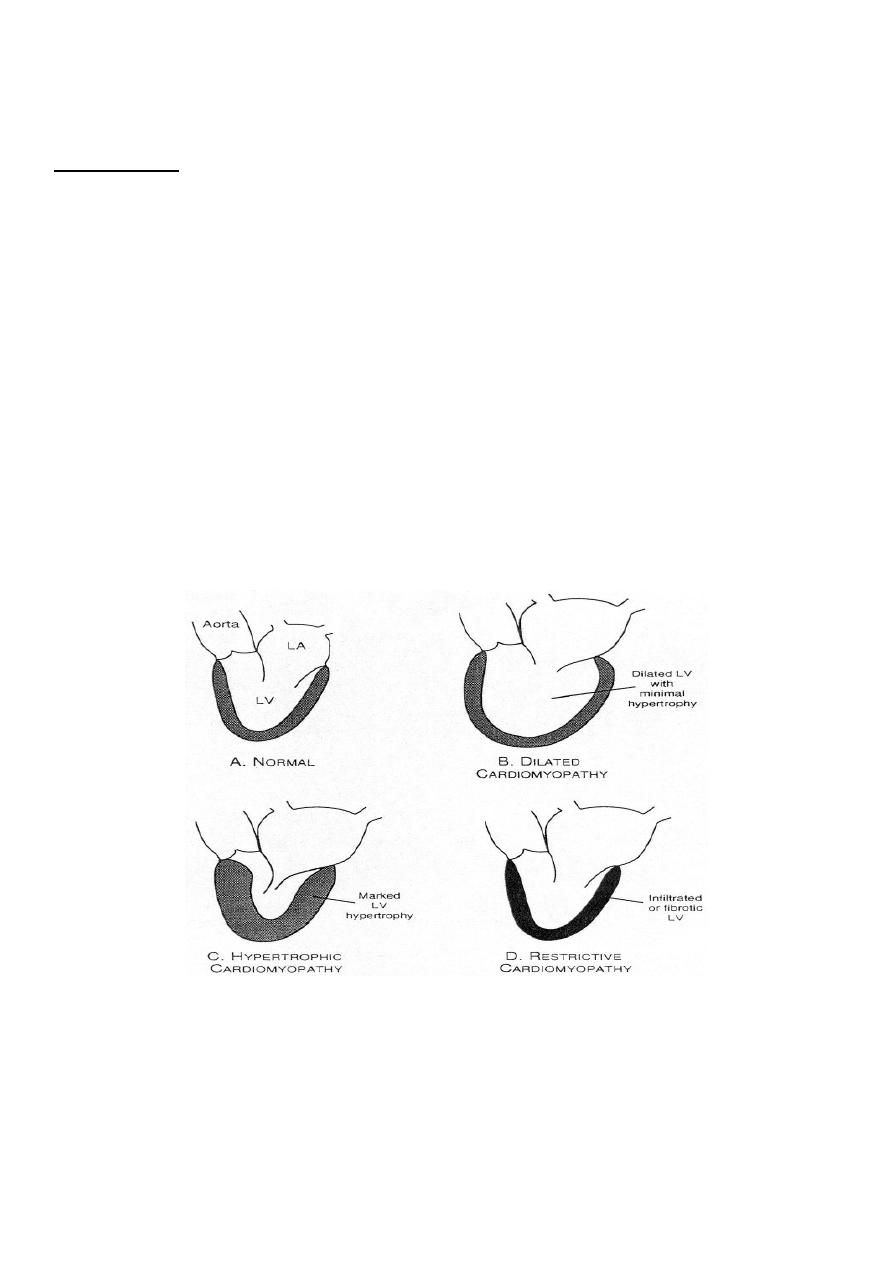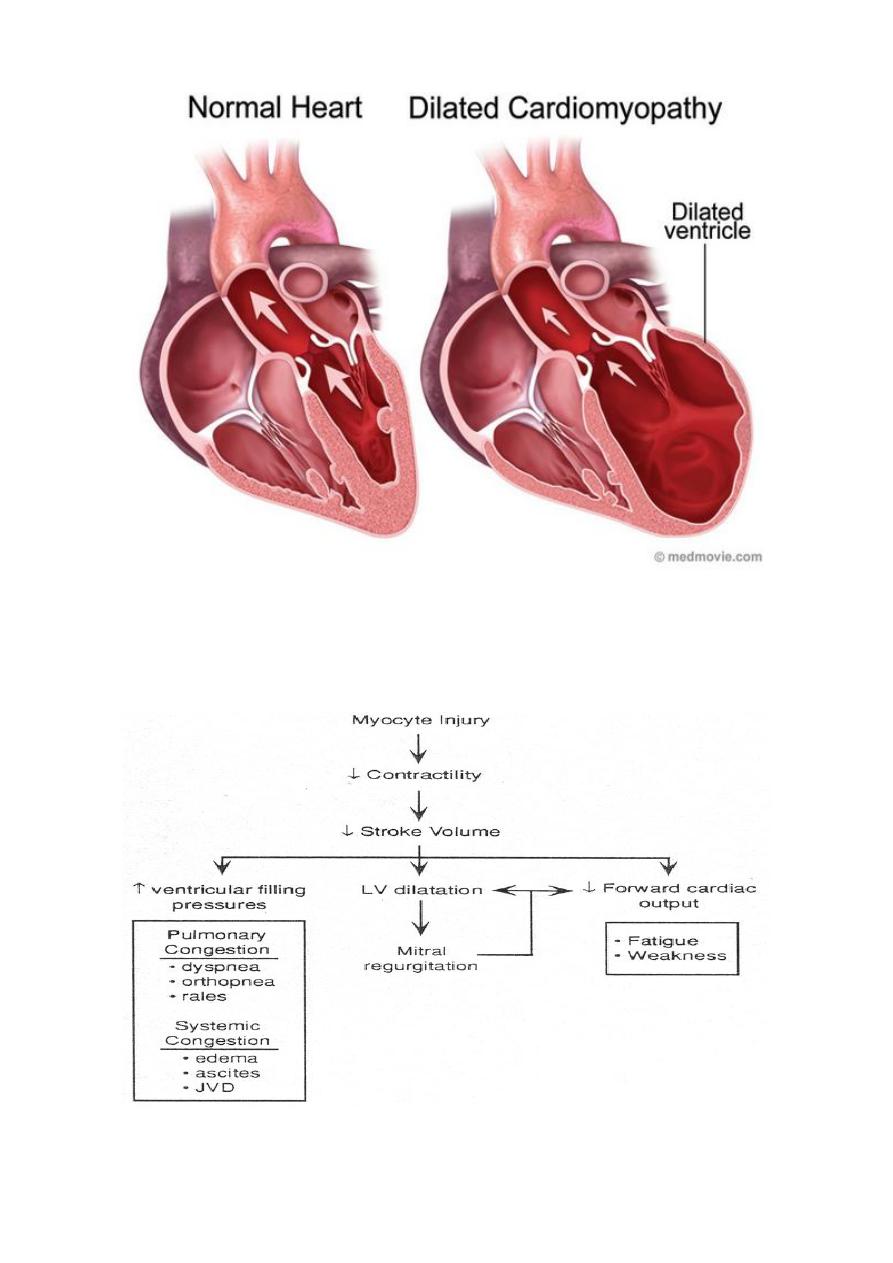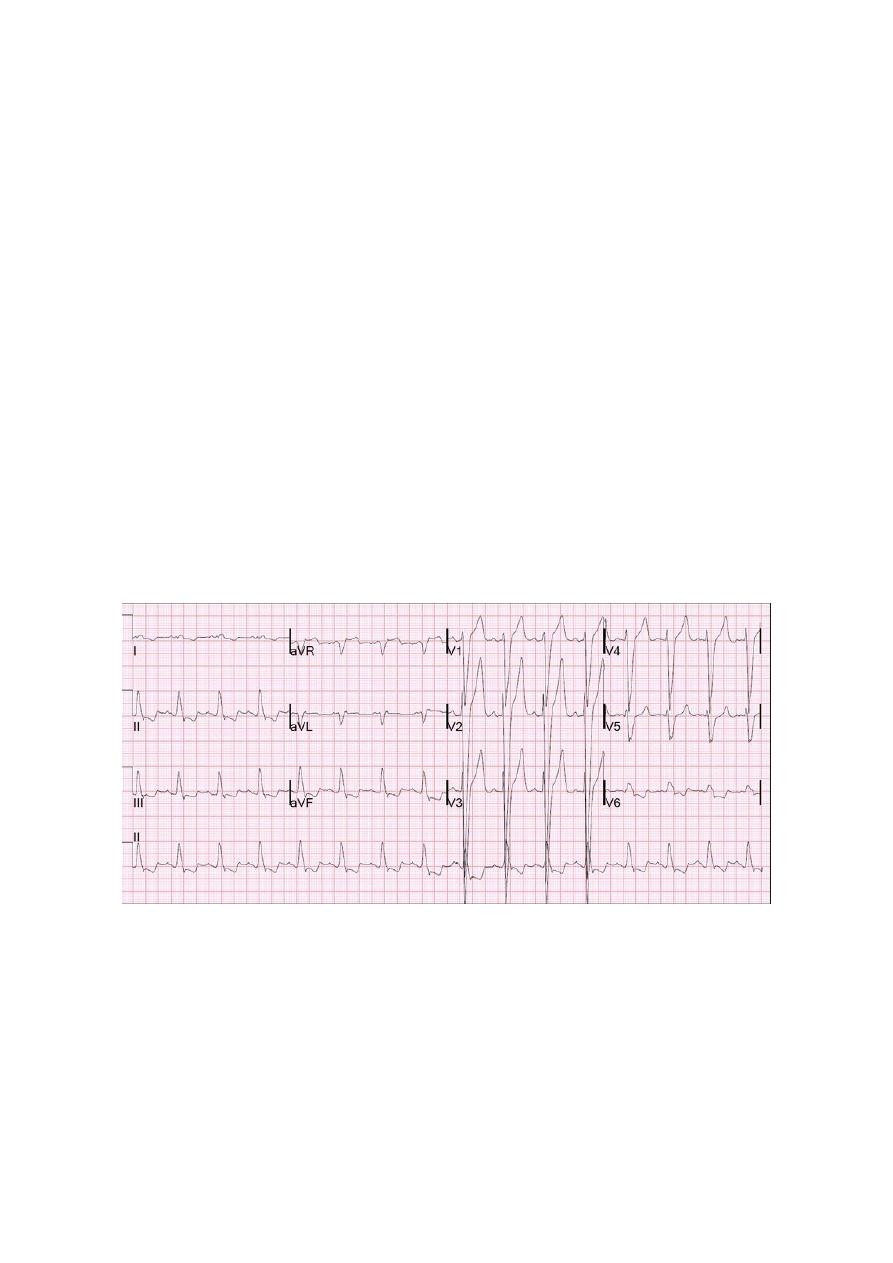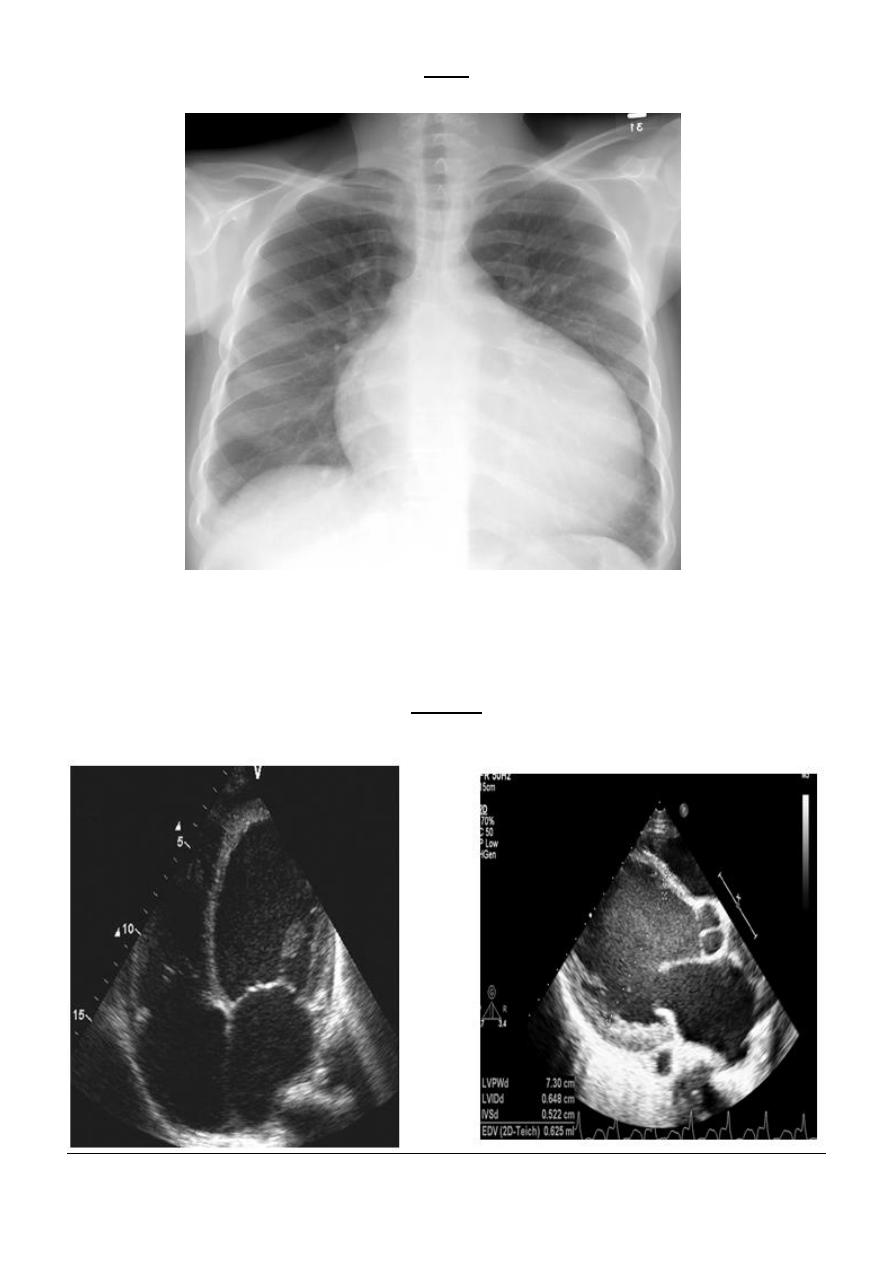
1
4th stage
Medicine
Lec-
د.جاسم
23/2/2016
Myocarditis
Acute inflammatory condition that can have an infectious, toxic or autoimmune etiology.
Viral infections are the most common causes, such as Coxsackie and influenza A and B
viruses.
Myocarditis may occur several weeks after the initial viral symptoms and susceptibility is
increased by corticosteroid treatment , immunosuppression, radiation, previous myocardial
damage and exercise.
Clinical Features
The clinical picture ranges from a symptomless disorder , sometimes recognized by the
presence of an inappropriate tachycardia or abnormal ECG, to fulminant heart failure.
Myocarditis may be heralded by an influenza like illness.
Diagnosis
ECG changes are common but non-specific .
Biochemical markers of myocardial injury (e.g. troponin I and T, creatine kinase) are
elevated.
Echocardiography may reveal left ventricular dysfunction , and if the diagnosis is
uncertain it can be confirmed by endomyocardial biopsy.
In most patients, the disease is self-limiting and only supportive therapy is available. the
immediate prognosis is excellent .

2
Cardiomyopathy
Definition : Cardiomyopathies are group of diseases primarily affecting the myocardium
and characterized by myocardial dysfunction that is not the result of coronary
atherosclerosis, hypertension, valvular dysfunction and pericardial abnormalities.
Types :
Dilated CMP
Hypertrophic CMP
Restrictive CMP
Arrhythmogenic right ventricular cardiomyopathy.
Obliterative cardiomyopathy.
Dilated (congestive) CMP
Heart is enlarged and both ventricles are dilated.
Myocardial contractility is diminished and cardiac output is reduced.

3
Pathophysiology
The pathogenesis is not clear

4
Etiology
1. Idiopathic
2. Familial (almost 20 %)
3. Alcoholism (accounts for 15 to 40% of all cases )
4. Collagen vascular disease (SLE, rheumatoid
5. Postmyocarditis
6. Peripartum (last trimester of pregnancy or 5 m postpartum)
7. Toxins (cobalt, lead, phosphorus
8. Antiretroviral agents (zidovudine, didanosine, zalcitabine
9. Infections: viral HIV, Coxsachivirus B, toxoplasmosis
10. Hematologic (e.g., sickle cell anemia, hemochromatosis)
11. Ischemic
12. Nutritional (beri-beri)
13. Irradiation
Symptoms
1. Asymptomatic
2. Dyspnea on exertion
3. Orthopnea, paroxysmal nocturnal dyspnea
4. Fatigue
5. Palpitations
6. Systemic and pulmonary embolism
7. Chest pain
Signs
1. Resting tachycardia
2. Raised JVP
3. Small pulse pressure
4. Pulmonary rales, hepatomegaly, peripheral edema
5. S3, S4

5
6. MR,TR
Complications
1. Congestive heart failure
2. Arrhythmias ( brady or tachy)
3. Thromboembolism
4. Sudden cardiac death
Investigations
1- Electrocardiogram( ECG)
LBBB
LVH with ST-T changes
Arrhythmias (sinus tachycardia, AF, PVC, VT)
2- Chest X-Ray: cardiomegaly and pulmonary congestion
3- Echocardiogram: Chamber enlargement and global hypokinesis

6
CXR
ECHO

7
Percutaneous
Cardiac cath: Contrast left ventriculogram, coronary angiogram
Endomyocardial biopsy: The role of endomyocardial biopsy in patients with dilated
cardiomyopathy is not well defined.
Goals of therapy
Treat underlying disease (SLE, alcoholism , hemochromatosis).
Treat HF with sodium restriction, diuretics, ACE inhibitors , nitrates, β-blockers,
spironolactone, and digitalis .
Limit activity when CHF is present.
Prevent thromboembolism with oral anticoagulants in all patients with Af and history
thromboembolism.
Surgical treatment
Patients with dilated cardiomyopathy (left ventricular EF <25%) and associated
coronary atherosclerosis (angina, ECG changes, reversible defects on thallium scan)
may benefit from surgical revascularization (CABG).
Consider heart transplant for young patients (younger than 60 years of age) who are
no longer responsive to medical therapy.
